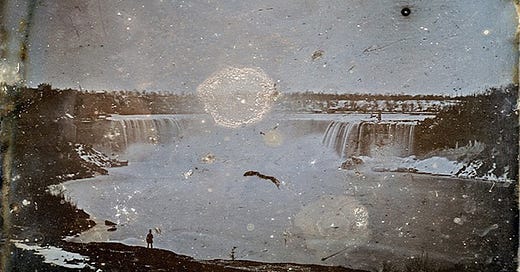Itinerary: Niagara Falls, NY, in the Off-Season
Maid of the Mist, "Free Niagara", Frederick Law Olmstead & Robert Moses, Cave of the Winds, Moss Islands, light shows
This week, we have an itinerary for visiting one of the country’s natural wonders during the pandemic and/or the off-season. But first—
Happy April Fool’s Day! A good day to appreciate the sunny, open, welcoming energy of The Fool, below, which has serious Hiker Trash vibes. (Wonderfully expressed in the cover art for Carrot Quinn’s book, Thru-Hiking Wil…
Keep reading with a 7-day free trial
Subscribe to Pinch of Dirt to keep reading this post and get 7 days of free access to the full post archives.


